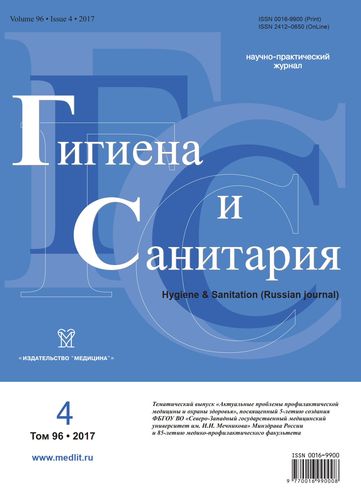ANALYTICAL APPROACH TO THE INSULATION PROPERTIES OF SPECIAL CLOTHING
- Authors: Ivashchenko I.N.1, Sevrugina N.I.2, Shmalko S.P.1
-
Affiliations:
- FSBOU HE «Kuban State University» of the Russian Federation Ministry of Education and Research
- NSA PEE HE «Academy of marketing and social-information technologies» of the Ministry of Education and Science of the Russian Federation
- Issue: Vol 96, No 4 (2017)
- Pages: 324-327
- Section: ENVIRONMENT AND HEALTH
- Published: 21.10.2020
- URL: https://kld-journal.fedlab.ru/0016-9900/article/view/640624
- DOI: https://doi.org/10.47470/0016-9900-2017-96-4-324-327
- ID: 640624
Cite item
Full Text
Abstract
The emergence of a variety of textile materials with new properties, the development of computer technology has changed the traditional approach to the processes of selecting materials, design and producing special clothing. The article discusses the analytical approach of Russian and foreign scientists in the investigation of insulating properties of special clothing. Regression modeling techniques, optimization theory with the use of computer technology are widely used under these conditions. The study examines the different regression models, the results of the correlation, factor analysis in the calculation of the correlation of various parameters: the total thermal resistance, surface density, water vapor permeability, air permeability, hygroscopicity, surface filling, total porosity, thickness, water yielding. On the basis of calculations of required insulation protective clothing, the time of continuous stay in the cold for southern region of Russia workers engaged in Oil production we have developed a computer program. Based on the proposed regression model the problem of maximizing the quality criterion has been solved. With the help of quadratic programming methods we defined: the optimum value of the thickness of the package material, the thickness of the coating materials, the minimum possible value of air permeability in the end - a target set insulation materials. Due to this approach it has been possible to establish the maximum acceptable construction of special clothing for such conditions, as well as to adapt the process of picking a package of materials for these clothes. The issue complete materials package and the need to study the properties of thermal insulation materials selected as close as possible for creating a comfortable working environment are related in this article. Designing heatproof special clothing includes the processes of its testing under different conditions. One of the problems to be solved in the course of our tests is an analysis of changes in the thermal fields of workers with different body masses in the process of employment.
Keywords
изоляционные свойства специальной одежды, пакет материалов, комплект одежды, проектирование специальной одежды, регрессионное моделирование, теория оптимизации, тепловые поля работника, теплоизоляция специальной одежды, The insulating properties of special clothing, materials package, a set of clothes, special clothes design, regression modeling, optimization theory, the thermal radiation field of a worker, insulation special clothing
About the authors
I. N. Ivashchenko
FSBOU HE «Kuban State University» of the Russian Federation Ministry of Education and Research
Author for correspondence.
Email: noemail@neicon.ru
Russian Federation
N. I. Sevrugina
NSA PEE HE «Academy of marketing and social-information technologies» of the Ministry of Education and Science of the Russian Federation
Email: noemail@neicon.ru
Russian Federation
S. P. Shmalko
FSBOU HE «Kuban State University» of the Russian Federation Ministry of Education and Research
Email: shmalko_sis@mail.ru
Russian Federation
References
- Rozanova E.A., Moskalenko N.G., Strel’tsov I.P. Development of a mathematical model for determining the parameters of a closed system «man-sportswear». Fundamental’nye issledovaniya. 2013; (11): 1142-6. (in Russian)
- Afzal A., Hussain T., Mohsin M., Rasheed A., Ahmad S. Statistical models for predicting the thermal resistance of polyester/cotton blended interlock knitted fabrics. Int. J. Therm. Sci. 2014; (85): 40-6.
- Qian X., Fan J. Prediction of clothing thermal insulation and moisture vapour resistance of the clothed body walking in wind. Ann. Occup. Hyg. 2006; 50(8): 833-42.
- Das A., Alagirusamy R., Kumar P. Study of Heat Transfer Through Multilayer Clothing Assemblies: A Theoretical Prediction. Autex Res. J. 2011; 11(2): 40-6.
- Surdu, L., Rădulescu I.R., Ghiţuleasa C., Subţirică A., Mihai C., Cioară I., Ene A. Comfort properties of multilayer textile materials for clothing. Ind. Textila. 2013; 64(2): 75-9.
- Ivashchenko I.N., Belyaeva S.A. Designing of heat-protective special clothes for workers of the oil-extracting industry. Monograph [Proektirovanie teplozashchitnoy spetsial’noy odezhdy dlya rabotnikov neftedobyvayushchey otrasli. Monografiya]. Krasnodar; 2012. (in Russian)
- Ivashchenko I.N., Afanas’eva R.F., Belyaeva S.A. The technology of formation of the regulated structure of heat-shielding clothing with thermophysical parameters. Certificate of state registration of the computer program № 2008615471; 2012. (in Russian)
- Ivashchenko I.N., Shmal’ko S.P. Regression models and optimization of the total thermal resistance of cover materials for garments for oil workers. Sovremennye problemy nauki i obrazovaniya. 2014; (3): 1-7. (in Russian)
- Ivashchenko I.N., Shmal’ko S.P. Linear and quadratic regression models of coating materials in fashion design. In: Science, Technology and Higher Education: materials of the V international research and practice conference. Westwood, Canada; 2014: 445-9.
- Ivashchenko I.N., Usatikov S.V., Shmal’ko S.P. Regression models and optimization of thermal insulation of a comfortable set of special clothes. Ekologiya cheloveka. 2016; (4): 21-5. (in Russian)
Supplementary files









